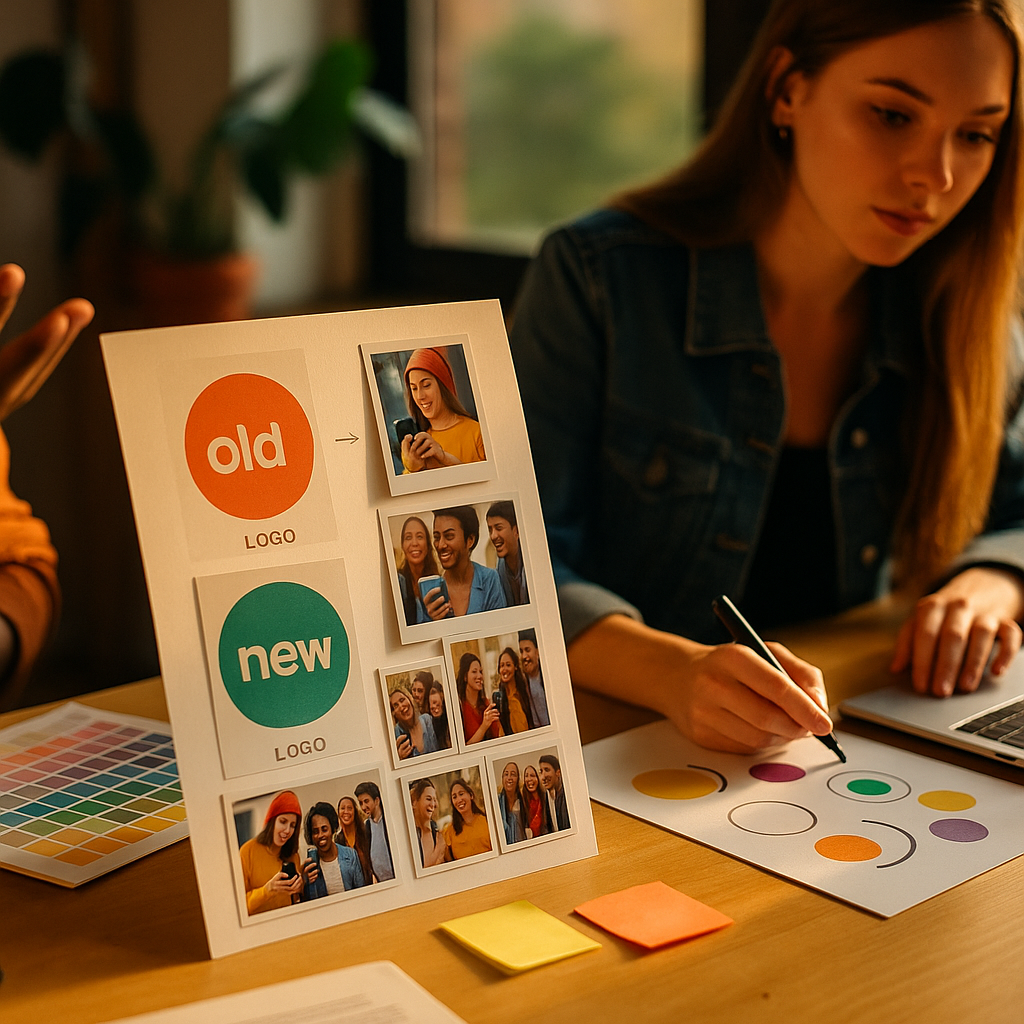A successful rebrand that targeted a younger demographic can transform a company’s relevance and boost market share in today’s fast-evolving landscape. Many brands struggle to connect with the next generation of consumers. Explore how one company navigated this crucial challenge—and discover the actionable steps you can apply to your own rebranding strategy.
Understanding the Need for Rebranding to Attract Younger Audiences
The foundation of any truly effective rebrand is a deep understanding of why it’s necessary. By 2025, Millennials and Gen Z will make up the majority of consumers worldwide. These digital natives crave authenticity, inclusivity, and experiences that align with their values. For many established brands, aging messaging and visuals can inadvertently signal irrelevance, causing market share to erode as younger consumers look elsewhere. In this case study, we’ll look at “VivaBrew”—a heritage coffee chain that recognized the urgency to reinvent itself as its loyal customer base got older and its youth-centric competitors thrived.
Market Research: Aligning with Emerging Consumer Trends
Before launching their rebranding initiative, VivaBrew invested in comprehensive market research. This approach is crucial for understanding the preferences, digital behavior, and purchase motivators of a younger demographic. By leveraging surveys, focus groups, and social media listening tools in late 2024, VivaBrew identified several key trends:
- Sustainability and ethics: Young consumers prioritize brands with eco-friendly practices and transparent sourcing.
- Digital-first communications: Mobile app engagement and influencer partnerships are integral to awareness and loyalty.
- Experience over product: The ambiance, events, and sense of community are as important as the coffee itself.
- Personalization: Customizable drinks and loyalty apps drive repeat purchases and brand advocacy.
These insights guided every decision, ensuring authenticity in resonating with this discerning audience.
Visual Identity Refresh for Generation Z Engagement
VivaBrew’s rebrand included a bold overhaul of its visual identity, a move proven to boost recognition and appeal among a younger crowd. The brand swapped muted earth tones in its logo and store designs for vibrant, playful shades inspired by social platforms like TikTok and Instagram. Store interiors featured eco-friendly materials and modular seating to encourage group interaction—an attractive feature for Gen Z and Millennials who value socially conscious, flexible environments. Both packaging and signage incorporated inclusive imagery and modern, sans-serif fonts, ensuring consistency across all touchpoints and reinforcing the brand’s contemporary image.
Digital Marketing Strategies Focused on Digital Natives
VivaBrew’s marketing team knew that to reach a younger demographic, traditional advertising wouldn’t suffice. Instead, they prioritized digital-first strategies including:
- Influencer and micro-influencer campaigns reaching niche coffee communities
- Short-form video content on platforms like Instagram Reels and TikTok, sharing behind-the-scenes stories, drink hacks, and user-generated content
- Loyalty programs gamified with exclusive rewards—custom stickers, limited-edition merchandise, and access to pop-ups or co-branded events
- Real-time customer engagement via Twitter, Discord, and in-app chat for feedback and rapid support
These digital efforts grew VivaBrew’s online following by 68% in six months and doubled app signups among 18-30-year-olds by early 2025.
Experience-Driven Community Building for Long-Term Loyalty
Recognizing that younger demographics value experiences, VivaBrew launched initiatives designed to foster community and shared values. In-store events included themed open mic nights, art pop-ups curated by local creators, and sustainability workshops—often streamed live for remote audiences. Their “Brew for Good” campaign partnered with regional environmental organizations, contributing a percentage of every eco-cup sold to local green projects.
This blend of online engagement and real-world connection helped VivaBrew become a cultural hub, not just a coffee seller. Net promoter scores among Gen Z respondents rose by 30% over previous years, with customers citing “inclusive vibe” and “fun events” in feedback surveys.
Measuring Results and Ensuring Credibility Through Consistency
To gauge the rebrand’s impact, VivaBrew set clear KPIs tied to both brand sentiment and sales performance. Metrics included:
- Social media sentiment analysis
- Foot traffic and repeat visit rates among customers aged 18-35
- App engagement rates and repeat purchase frequency
- Sales growth relative to legacy competitors
The data told a compelling story: By Q1 2025, sales in the targeted demographic rose by 42%, and positive brand mentions outpaced negative ones 8 to 1. Industry analysts pointed to VivaBrew’s unwavering consistency across digital, in-store, and community channels as the linchpin of its credibility and renewed relevance.
Conclusion: Key Takeaways from a Successful Rebrand Targeting Younger Demographics
VivaBrew’s transformation exemplifies how a successful rebrand that targeted a younger demographic demands research, authenticity, and strategic experience-building. Brands must stay nimble, invest in relevant touchpoints, and listen closely to new consumer preferences. The payoff? Greater loyalty, cultural resonance, and profitable growth—no matter how rapidly the market evolves.
FAQs: Your Questions About Rebranding for Younger Demographics Answered
-
What is the most important first step in rebranding for a younger demographic?
The crucial first step is in-depth market research to understand what younger consumers value—including trends, digital habits, and pain points—before making any branding decisions. -
How long does a rebranding process typically take?
Timelines vary, but a comprehensive rebrand that includes research, design, marketing, and rollout usually spans 6-18 months, depending on brand size and complexity. -
What mistakes should brands avoid when targeting Gen Z and Millennials?
Avoid superficial changes or inauthentic campaigns. Today’s younger consumers demand transparency and sincerity, so empty gestures or outdated tactics can damage trust. -
How do you measure if a rebrand has been successful with younger audiences?
Key indicators include engagement metrics (social, digital app usage), demographic sales growth, brand sentiment analysis, and customer retention rates. -
Can small businesses effectively rebrand to attract younger consumers?
Absolutely. While budgets may be smaller, small businesses can still leverage digital marketing, authenticity, and community-centric events to resonate with younger demographics.
